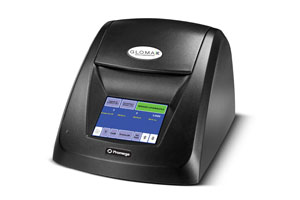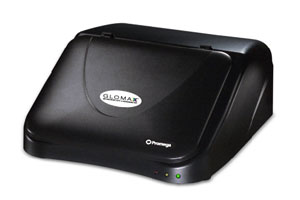用于DNA定量的 PicoGreen染料在Picofluor便携式荧光计上的应用
已下载4160次 / 原平皓生物
简介:
用于DNA定量的 PicoGreen染料在Picofluor便携式荧光计上的应用
PicoGreen dsDNA Quantitation Reagent is an ultra-sensitive fluorescent nucleic acid stain for quantitating double-stranded DNA (dsDNA) in molecular biological procedures such as cDNA synthesis for library production and DNA fragment purification for subcloning, as well as applications, such as quantitating DNA amplification products1,2 and primer extension assays.3,4
The most commonly used technique for measuring nucleic acid concentration is the determination of absorbance at 260 nm (A260) The major disadvantages of the absorbance method are the large relative contribution of nucleotides, single-stranded nucleic acids and proteins to the signal, the interference caused by contaminants commonly found in nucleic acid preparations, the inability to distinguish between DNA and RNA, and the relative insensitivity of the assay (an A260 of 0.1 corresponds to a 5 µg/mL dsDNA solution). Hoechst (bis-benzimide) dyes are sensitive fluorescent nucleic acid stains that circumvent many of these problems. The Hoechst 33258 Dye - based assay is somewhat selective for dsDNA, does not show significant fluorescence enhancement in the presence of proteins and allows the detection and quantitation of DNA concentrations as low as 5.0 ng/mL DNA.5
PicoGreen dsDNA Quantitation Reagent is an ultra-sensitive fluorescent nucleic acid stain for quantitating double-stranded DNA (dsDNA) in molecular biological procedures such as cDNA synthesis for library production and DNA fragment purification for subcloning, as well as applications, such as quantitating DNA amplification products1,2 and primer extension assays.3,4
The most commonly used technique for measuring nucleic acid concentration is the determination of absorbance at 260 nm (A260) The major disadvantages of the absorbance method are the large relative contribution of nucleotides, single-stranded nucleic acids and proteins to the signal, the interference caused by contaminants commonly found in nucleic acid preparations, the inability to distinguish between DNA and RNA, and the relative insensitivity of the assay (an A260 of 0.1 corresponds to a 5 µg/mL dsDNA solution). Hoechst (bis-benzimide) dyes are sensitive fluorescent nucleic acid stains that circumvent many of these problems. The Hoechst 33258 Dye - based assay is somewhat selective for dsDNA, does not show significant fluorescence enhancement in the presence of proteins and allows the detection and quantitation of DNA concentrations as low as 5.0 ng/mL DNA.5


